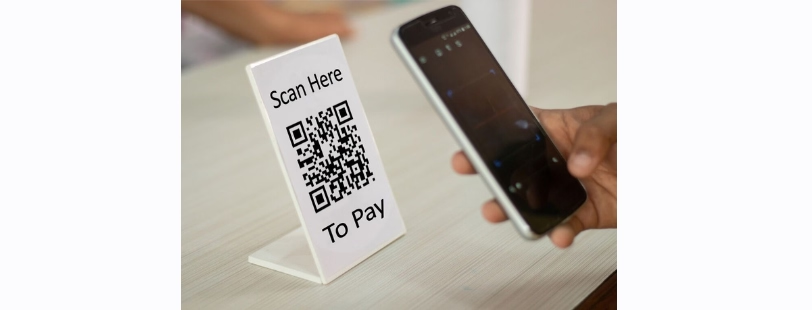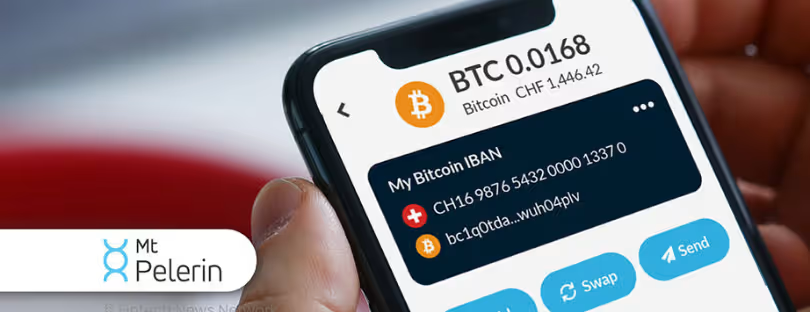
The Rapid Growth of QR Code Payments
QR codes are transforming the payment landscape at a breakneck pace, and the market is expected to skyrocket. According to a recent report, the QR code payment market will surge to an astounding $35.07 billion globally by 2030, growing at a 16.1% Compound Annual Growth Rate (CAGR). This explosive growth signals a significant shift in how consumers and businesses handle transactions. But what’s driving this boom, and how will it shape the future of payments? QR Code Payments
Let’s dive into the fascinating world of QR code payments and uncover what’s fueling their rise.
Why QR Codes? Convenience, Security, and Speed
In today’s fast-paced world, convenience reigns supreme, and QR codes provide exactly that. Whether it’s paying for your morning coffee or shopping online, scanning a QR code is simple, quick, and secure. Here’s why QR code payments are taking over:
- Frictionless Transactions – All it takes is a quick scan to make a payment, eliminating the need for cards or cash.
- Enhanced Security – Transactions are encrypted, making them far less prone to fraud.
- Global Accessibility – With QR codes, you don’t need a specific type of card or account—just a smartphone.
How QR Codes are Revolutionizing Retail Payments
For retailers, QR codes are a game changer. Whether it’s in brick-and-mortar stores or online platforms, they offer a seamless way to accept payments, boosting the overall shopping experience. By 2030, the integration of QR codes into payment systems is expected to dominate, as customers demand quicker and more convenient payment methods.
QR Codes in E-Commerce: A Digital Powerhouse
E-commerce has thrived in the digital age, and QR codes are helping take it to the next level. Here’s how QR codes are revolutionizing online shopping:
- Instant Payments: Forget entering card details. A QR code allows customers to pay instantly with a scan.
- Reduced Abandonment Rates: Quicker payments mean fewer chances for customers to abandon their carts mid-purchase.
- No Need for Physical Cards: For users without access to traditional payment methods, QR codes open the door to global shopping.
What’s Fueling the QR Code Payment Explosion?
Several factors are driving the QR code payment market’s rapid growth:
1. Widespread Smartphone Adoption
The growing use of smartphones worldwide has made QR codes ubiquitous. As more people gain access to mobile technology, they are able to participate in the modern payment ecosystem with ease. The rise of e-wallets and mobile banking apps only strengthens this trend.
2. The COVID-19 Pandemic and Contactless Payments
COVID-19 accelerated the shift toward contactless payments. QR codes gained immense popularity during the pandemic as consumers sought hygienic ways to make purchases. Even as the pandemic subsides, the habits formed during that time are here to stay.
3. Global Push Toward Cashless Economies
Governments and financial institutions around the world are advocating for cashless economies. QR codes play a crucial role in this transformation, offering a fast and reliable payment alternative in both developed and emerging markets.
QR Code Payment Market Segmentation: Breaking It Down
To understand the scope of QR code payments, it’s essential to look at the market segmentation. The market is primarily divided by solution, payment mode, and end user.
Solutions: Merchant-Presented vs. Customer-Presented
- Merchant-Presented Solutions (MPS): In this method, the merchant presents the QR code to the customer for payment. This solution is particularly popular in physical stores and restaurants.
- Customer-Presented Solutions (CPS): The customer generates the QR code on their device, which is scanned by the merchant. This method is often used in peer-to-peer (P2P) transactions.
Payment Modes: Dynamic vs. Static QR Codes
- Dynamic QR Codes: These are unique to each transaction and offer enhanced security.
- Static QR Codes: These remain the same for multiple transactions, making them convenient but less secure.
End Users: B2B, B2C, and C2C Payments
- Business to Consumer (B2C): The largest market share belongs to B2C payments, as more consumers and retailers adopt QR codes.
- Business to Business (B2B): B2B QR code payments are growing as businesses look for streamlined ways to handle transactions.
- Consumer to Consumer (C2C): Peer-to-peer transactions are booming, especially with the rise of mobile payment platforms.
Regional Analysis: QR Code Payments Around the World
1. Asia-Pacific: The Global Leader
It’s no surprise that Asia-Pacific is leading the charge in QR code adoption, particularly in countries like China, India, and Japan. With giants like WeChat Pay and Alipay setting the stage, this region is the backbone of the global QR code payment boom.
2. North America: Rapid Growth and Future Potential
In the United States and Canada, QR code payments are gaining ground, especially in e-commerce. As retailers continue to modernize their payment systems, expect significant growth in this region.
3. Europe: Innovation Meets Adoption
Europe is not far behind, with countries like Germany, France, and the UK embracing QR code technology. The region’s strong financial infrastructure makes it a ripe market for QR code payment expansion.
4. Emerging Markets: Africa and Latin America
QR codes are proving to be particularly valuable in emerging markets where access to traditional banking is limited. In regions like Africa and Latin America, QR codes offer a low-cost, highly accessible way to make payments without needing a bank account or credit card.
Key Players Driving Innovation in QR Code Payments
Several companies are pioneering QR code payment technology, pushing the boundaries of what’s possible:
- Alibaba (Alipay)
- Tencent (WeChat Pay)
- Google Pay
- PayPal
- Visa
- Mastercard
These companies are investing heavily in expanding QR code payments, developing new technologies to make the process even faster, more secure, and more widespread.
Challenges Facing the QR Code Payment Market
While the future looks bright, there are a few obstacles the QR code payment market needs to overcome:
1. Security Concerns
Although QR codes are encrypted, there are still vulnerabilities, especially with static QR codes. Hackers could exploit these to redirect payments or access sensitive information.
2. Compatibility and Adoption
For QR codes to reach their full potential, there needs to be greater compatibility across platforms and devices. Some countries or regions may also be slow to adopt the technology due to infrastructure challenges or consumer habits.
The Future of QR Code Payments: What’s Next?
The future of QR code payments is full of promise. As the market continues to grow at a 16.1% CAGR, here are a few trends to watch:
- Integration with Blockchain Technology: This could enhance security and transparency.
- Further Expansion in Emerging Markets: As smartphone penetration increases, expect to see QR codes dominate in regions where traditional banking is less common.
- Cross-Border Payments: QR codes could simplify international transactions, particularly in e-commerce.
Conclusion: A Cashless Future Powered by QR Codes
QR code payments are more than a passing trend—they’re reshaping the way we handle money. Whether you’re paying for groceries, splitting a bill with friends, or making an international purchase, QR codes offer a fast, secure, and convenient way to transact. With the market projected to reach $35.07 billion by 2030, it’s clear that QR codes are here to stay. The next decade will likely see further innovations that make payments even smoother and more accessible. QR Code Payments










